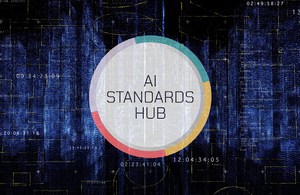
Predictive defense, machine learning algorithms, and artificial intelligence are just some of the industry’s emerging cloud-based technologies being adopted to improve cybersecurity.
It goes without saying that technology is changing more rapidly than ever before. Businesses are migrating to the cloud, most if not all services are automated, and company data is becoming the main target of cybercriminals. Here is where cloud cybersecurity comes in.
Cybersecurity is one of the fastest-growing sectors, valued at almost $165.78 billion, and is present in almost every industry. As more company information is stored online in clouds, there is a greater demand for cybersecurity solutions to protect it. Whether you are a consumer or a business owner, you must be prepared to adapt to new strategies, rules, and technologies that create a safer and more secure online space.
A cyberattack occurs when cyber criminals illegally access electronic data stored on a network or a computer. In other words, it is a data breach that occurs when someone accesses your files without authorization.
If you are convinced that this has nothing to do with your business, think again. No threat facing the US and other countries has grown as fast as the danger from frequent cyberattacks. 2 out of 3 financial institutions reported an increase in cyberattacks over the past few years, while 1 out of 4 financial enterprises experienced a destructive attack.
Cyber crime is up 600% due to the COVID-19 pandemic, making it a burning issue. In previous years we saw major hacks and leaks costing companies customer data and reputation.
Without a cloud, it would be almost impossible for businesses to operate nowadays. However, a number of people are still convinced that their hardware is more dependable than the cloud (although this is true in some limited use cases).
This myth comes from cloud services being ‘external,’ which makes most people skeptical about them – they wonder if they are safe. The truth is that traditional cybersecurity ensures that personal devices are protected against hackers, while cloud security focuses on protecting cloud-stored data from unauthorized access, making it way more effective.
See also: 2022 Cloud Computing Cybersecurity Threats and Trends
Why cloud cybersecurity is the future of overall security
The future of technology is all about security, as it has already become an integral part of our lives. Cloud cybersecurity can be expected to play a major role in protecting the personal data of individuals, scaling up all the way to big enterprises, and preventing them from being targeted and exploited. Let’s highlight some of the points for why this is the case:
Growth of cloud computing technologies
Due to the pandemic-induced shift to remote work and thanks to the advantages of moving to cloud for businesses, the future of work will revolve around utilizing cloud technologies to conduct business. With that being said, security plays a vital role in that future, where all data is stored on the cloud. That’s why cloud cybersecurity comes as the first priority.
Cloud cybersecurity’s ability to predict and prevent cyberattacks in real time
What makes cloud cybersecurity superior to traditional cybersecurity is its ability to predict attacks and repel them in real-time. Unlike reactive security features that first need to detect an attack and then respond to it, cloud cybersecurity is predictive, which means it can predict a compromising event in real-time and prevents it before any damage can be done.
As a matter of fact, AI (Artificial Intelligence) and ML (Machine Learning) will continuously and increasingly influence cybersecurity evolution. Ongoing training and adaptation will allow systems to recognize and respond to new threats. Predictive security is the way of the future.
IoT technologies growth requires strong cybersecurity, which can be only cloud cybersecurity
Cloud computing will also become the backbone of everything the Internet of Things (IoT) has to offer. Although the Internet of Things and cloud computing are distinctively two separate technologies, when these two are combined, they deliver powerful innovation altering how people interact with their devices, consume information, and store and manage data.
The constant rapid growth of IoT, forecasted to be even faster than the cloud, will put a huge strain on the IT sector and computing resources required to maintain the desired level of connectivity and data collection that every Internet of Things device requires. This is where cloud computing comes into play.
In short, cloud computing can help you with many technical issues, allowing you to deal with the level of resources you need in order to launch an IoT product. It will not only speed up your development process but will also cut costs.
Agility improvement when moving to cloud
Major cloud vendors can offer some of the most robust and secure cloud infrastructures in the IT space. Moving to the cloud improves your overall security, but what’s more, it also improves business and software development agility. Developers can make continuous improvements to applications, sometimes even daily. What makes it important is that hackers aren’t being idle and come up with new ways to break into your network daily. You can never exactly predict when an attack will come and what the target will be. Keeping your software regularly updated means making it less vulnerable to threats and attacks.
The biggest cloud cybersecurity challenges in 2022
As security breaches have evolved and we are witnessing new sophisticated attacks emerge, it is of the utmost importance to embrace security-first mentalities to avoid the biggest challenges we are going to face this year.
#1 Compliance with regulatory mandates
It is commonplace for SMEs to assume they are getting the most out of their cyber protection by working with a cloud provider. However, compliance goes way beyond federal and international regulations. A good cloud security provider supplies the technical capacity to abide by regulatory mandates and has granular attention to detail.
But bear in mind that the cloud provider is only in charge of securing the cloud, while the end-user (clients) is responsible for security in the cloud. Each side has to remain proactive and do its job to get the most out of cybersecurity.
#2 Unsecured APIs
Although the cloud surface area for attack is smaller in totality, it is more fragmental. There’s no doubt that APIs are great, but even if the cloud seems safe and sound, intruders can breach into less secure APIs.
Not all cloud providers offer the same level of security to protect against weak points.
#3 Lack of IT expertise
According to statistics, one-third of companies are avoiding cloud because their business manager or IT do not have the experience and knowledge, and 72% stated they lacked the resources to handle cloud demands and secure their cloud services.
The average SME now has between two and five clouds, which means more layers of complexity and greater demands regarding relevant experience and technical competence on the part of your tech team.
The wrap up
To protect corporate, private, government, and individual information and defend against sophisticated threats, organizations should opt for flexible and intelligent cloud-based cybersecurity framework. Hybrid cloud deployments, predictive defense, machine learning algorithms, and artificial intelligence are just some of the industry’s emerging technologies.
Lastly, SOCs (Security Operation Centers) should also strengthen their proactive cybersecurity strategies because cyber threats are becoming more popular and more sophisticated, making them hard to detect.




























